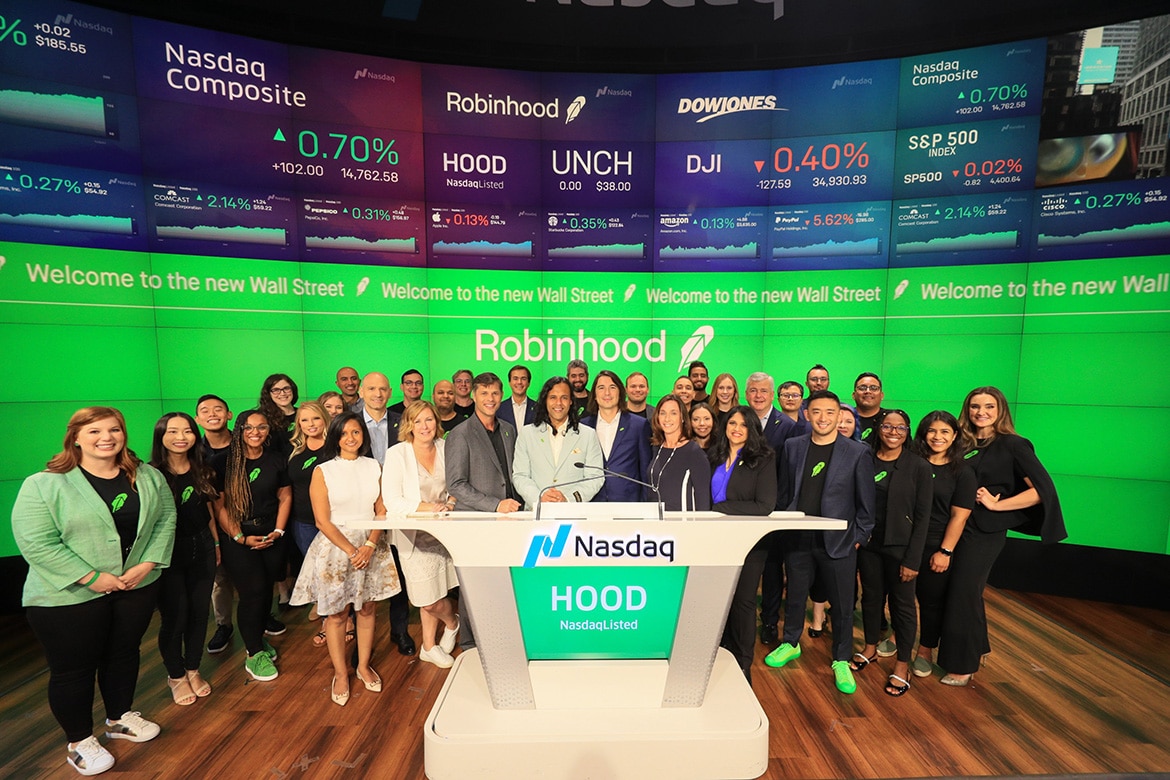The HOOD stock remained under pressure as retail investors resolved to profit-booking amid lingering anger of customers and regulators cracking down.
On Thursday, July 29, popular trading app Robinhood debuted on Wall Street amid major fanfare. Despite the pricing at the lower end of the IPO range, the Nasdaq-listed HOOD stock tanked 8% on the first day.
HOOD Stock Performance
In the early market hours, the HOOD stock started trading at $38 per share valuing the company roughly at $32 billion. On the closing basis, the Robinhood stock was trading at $34.82 with its market cap at about $29 billion. Thus, it was 20% less than the company’s expectations. Also, at the current valuations, Robinhood is valued at 10.5 times as forward of its EBIDTA.
The zero-commission stock trading app has got massive popularity among Wall Street traders. The company sold around 52.4 million HOOD shares raising close to a massive $2 billion. Also, as per the reports, co-founders Baiju Bhatt and Vlad Tenev sold $50 million worth of stock each.
Wall Street banking giants JPMorgan Chase and Goldman Sachs were the leading underwriters for the stock. These underwriters also get the option of buying 5.5 million additional shares. However, over control of the share supply has brought trouble for Robinhood. Speaking to Reuters, Kathleen Smith at Renaissance Capital in Greenwich, Connecticut said:
“It maybe seemed like a good idea to offer (the IPO) to your customers, but it might not be very helpful when it comes to controlling how the shares are allocated and the beginning of the trading of this IPO”.
Robinhood’s Volatile Revenue Trend
Although Robinhood managed to raise $2 billion, the retail sentiment towards it remains dicey. This is very much clear as the stock remained under on the first day of the listing. Reena Aggarwal, professor of finance at Georgetown University noted:
“The market believes that institutional investors will hold on for a longer time, and retail investors are more likely to flip”.
Besides, Robinhood’s revenue trend also remained volatile over the last two years. Back in 2019, the company reported a revenue of $959 million with $107 million worth of losses. Last year, the picture turned for the good as the company reported $959 million but managed to turn profitable with $7.45 million in profits.
However, the GameStop saga earlier in January 2021 hit Robinhood badly. As a result, the brokerage lost $1.4 billion during the first quarter and had to opt for emergency fundraising.
Since the GameStop saga, Robinhood has been under regulatory scrutiny. Besides, it faced major backlash from its users for limiting trades and margins during the GameStop event. Thus, with the lingering anger of customers and regulators cracking down, retail players are staying at arm’s length as of now.
Currently, Robinhood is offering three major services – equity, cryptocurrency and options trading to its customers. The company is looking to expanding its services further. Robinhood is willing to introduce a cryptocurrency wallet to allow its users to hold their crypto purchases. It also plans to diversify its services from traditional trading by offering retirement accounts.
